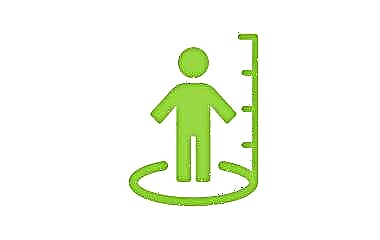
A woman is capable of conceiving only during ovulation, and therefore the question of how to determine it is very important both for women who want to become mothers and are planning a pregnancy, and for those who are not yet ready for the birth of a child and are concerned about contraception. This article will tell you about what the ovulatory (ovulation) period is and how to calculate it.
How does the release of the egg take place?
The female body has a supply of gamete germ cells, which is not replenished during life, but is actively consumed. And when it ends, menopause comes. At birth, girls in the ovaries have a certain supply of follicular rudiments, which begin to ripen one per month at the onset of puberty. This is the reason for the onset of menstruation. The biological meaning of ovulation is in the exit of a mature egg from the follicle located on the surface of the ovary.


But before the gamete leaves the follicular vesicle, it must mature. And this process begins after the next menstruation.
In both gonads, an increase in several primary follicles with immature oocytes inside begins. A few days later, one dominant follicle remains, inside which a germ cell matures, which is destined to give a chance for conceiving a baby in the current cycle. Double maturation, when two follicles grow at once, is rare.
The bubble increases, a cavity grows inside, an oocyte floats in it in a liquid medium. This process is accompanied by hormonal support for the hormone FSH.
By the middle of the cycle, the hormonal background changes in women, estrogen prevails, and the production of luteinizing hormone begins. The peak of LH provokes a thinning of the membrane of the Graafian vesicle, stigma is formed, and at this point the follicle ruptures. Ovulation occurs, after which the oocyte is in the fallopian tube from the side of the ovulated ovary. Conception should occur there if all the conditions are met for this.
The ovulation period is short, because the female gamete lives for about a day. Immediately after its release, the so-called corpus luteum, which produces progesterone, begins to form on the ovary at the site of the follicle perforation. This active substance is extremely important, since it prepares the woman's body to accept the embryo, creates favorable conditions for the start of pregnancy.
And if pregnancy has not occurred, then the corpus luteum exists from 10 to 13 days, and then resolves. The hormonal background changes again, and the woman begins another menstruation. Its arrival means the beginning of a new cycle, in which the sequence of stages will be repeated again.
If fertilization occurs, then the activity of the corpus luteum does not stop, the temporary formation actively supports the hCG hormone, which is produced by the thin villi of the chorion of the embryo, there are no menstruation, pregnancy develops.
Girls and women have cycles in which ovulation does not occur, and this is quite an acceptable phenomenon if there are no more than 2 such cycles per year. With age, anovulation can occur up to 6 times a year, and therefore it can be difficult for women over 35 to become pregnant. even if they are healthy.


When does the ovulation window start and end?
The period of ovulation begins immediately after the end of the follicular phase, so named for the accompanying process of follicular growth. This phase for different representatives of the fair sex has a different duration. Its beginning is the first day of the next menstruation, and the end is the rupture of the bubble.
The growth of the follicle and the processes occurring with the gamete inside it can be strongly influenced by various factors, and therefore this phase is unstable and may change over time. This affects the day of ovulation - it can occur earlier or later.
The second half of the cycle is the luteal or corpus luteum phase. It is considered to be more stable because the effect on hormonal levels is minimized. Regardless of how long the entire cycle lasts from the first to the last day (this is very individual), the second phase in different women usually lasts 14 days.
It is on this that the main method for calculating the day of ovulation is built. Subtract 14 from the duration of the female cycle. So we get the estimated day of oocyte release - the day when conception is most likely. But it should be understood that the result obtained is not the ultimate truth.


The date of ovulation may change if there are fluctuations in the hormonal background in the first phase... This can be influenced by endocrine disorders, gynecological diseases, poor nutrition, travel with a change in climate and time zones, lack of sleep, the flu, as well as chronic prolonged stress or a recent strong emotional shock. In this case, the second half of the cycle usually remains stable.
The calendar method described above allows you to predict the day of ovulation. And with a cycle of 26 days of ovulation, it is worth waiting for 12 days, and with a cycle of 30 days - only on the 16th day of the cycle.
Ovulation lasts about an hour, and therefore the egg remains alive and capable of fusion with the sperm from 24 to 36 hours. If fertilization does not occur during this time, the gamete dies.
When calculating the fertile period, you should take into account not only the day of ovulation, but also the period of the fertile window. It is due to the fact that sperm, unlike female gametes, can live longer without losing their ability to fertilize. The average life span of a male reproductive cell is 3-4 days, it is recommended to add them on both sides of the day of ovulation. Thus, we get the period during which unprotected sex can lead to pregnancy.
With a cycle of 26 days, ovulation should occur on day 12, and the fertile period begins on day 8, and with a standard and common cycle of 28 days, ovulation most often occurs on day 14, and the beginning of the fertile period on day 10.
The same is with the beginning of the second phase. 3-4 days after ovulation are considered favorable for conception. Therefore, those who are planning a child or, conversely, want to protect themselves from unwanted pregnancy, should take this into account.


For your information: despite the fact that the fertile period lasts 8-9 days, fertilization itself is possible only on the day of ovulation and within 24-36 hours after it. Not a few days before the release of the oocyte, nor 4 days after the important day, conception is no longer possible, since it requires a mature and living egg.
Sexual intercourse before ovulation can guarantee the presence of spermatozoa in the genital tract of a woman, which can fertilize the oocyte immediately after its release, even if sexual intercourse itself was 3-4 days ago. During intercourse on the day of ovulation and a day later, the sperm cover the distance between the vagina and the fallopian tube in about 40 minutes.
The same system is used to calculate the ovulation period and existing online calculators and counters. However, one cannot fully rely and rely on such calculations, because the probability of an error in the calendar method is high.

Ways to improve the accuracy of the calculation
There are more reliable ways to determine ovulation after you calculate your fertile period using a calendar or calculator. For this, home ovulation tests, the basal temperature measurement method and symptomatic methods are used. If you use several methods at once, the results will be more accurate.
- The tests begin to delight the owner with a bright second strip 1-2 days before ovulation, as they react to an increased level of the LH hormone in the urine.
- On the graph of basal temperature on the day of oocyte release, there is a characteristic rise, and the symptoms can be very different, individual, which is not difficult to understand by observing your well-being in the middle of the cycle for 3-4 months.
- Most often, there is an increase in secretions, the mucus becomes transparent and viscous, it is easily stretched by several centimeters "in a thread" between the fingers, and the sexual desire increases.
Some people note that the lower abdomen pulls, the emotional state worsens. Sometimes a brownish light "daub" may occur on the day of ovulation and days later. Someone has a headache, someone is sick, but most women do not observe anything unusual, except for vaginal discharge.
Ultrasound of the follicles and the delivery of laboratory blood tests for hormones can more accurately track ovulation.
Useful Tips
If you are planning to have a baby, then determining the fertile period is important. After this, unprotected sex should be carried out every other day, starting from the first day of the fertile window, on the day of ovulation - mandatory, since the probability of getting pregnant is the highest on this day.
Women who seek to learn more about the ovulatory period in order to plan contraceptive measures need to know that it is possible to become pregnant during the fertile window even with interrupted intercourse, since a man's sex cells suitable for fusion can even be contained in the physiological lubricant that is released in large quantity at the time of sexual arousal. The calendar method of contraception is unreliable. This should not be forgotten when the ovulation period begins.
And in fact, and in another case, women should not forget that in any cycle there is a likelihood of a shift in ovulation, and with it the boundaries of the fertile period.
Therefore, albeit insignificant, there is still a possibility of pregnancy both earlier and later than the expected date of ovulation. This is especially important to remember for those whose plans of conception are not included.

The ovulation period is clearly and with explanations described in the following video.



